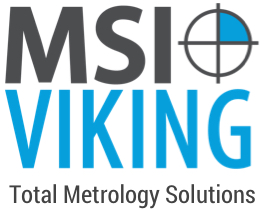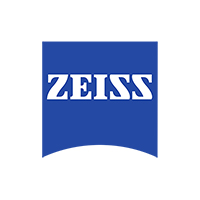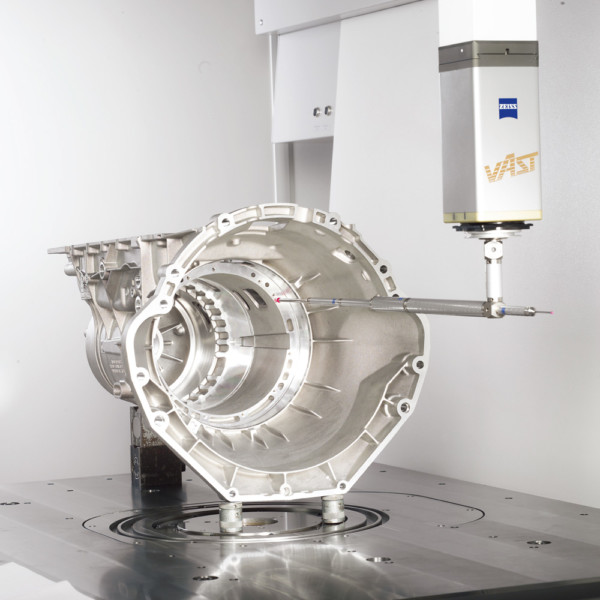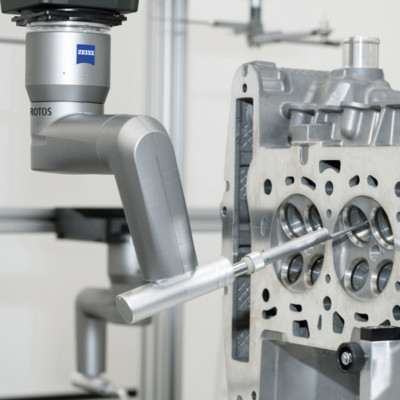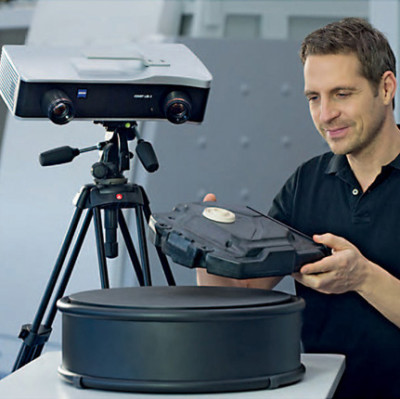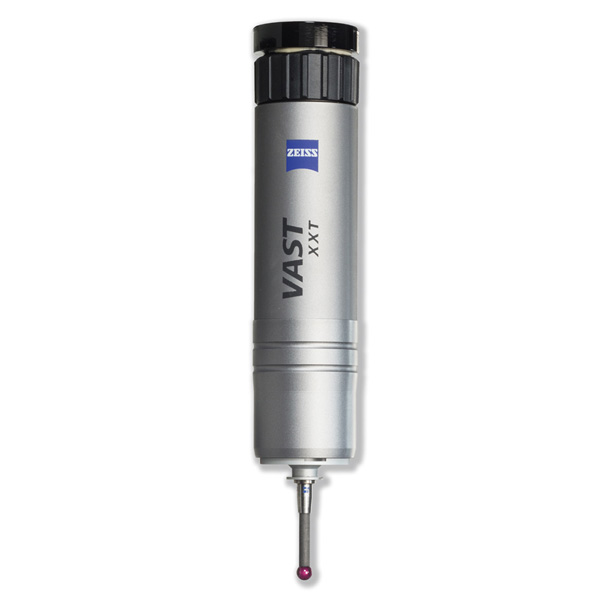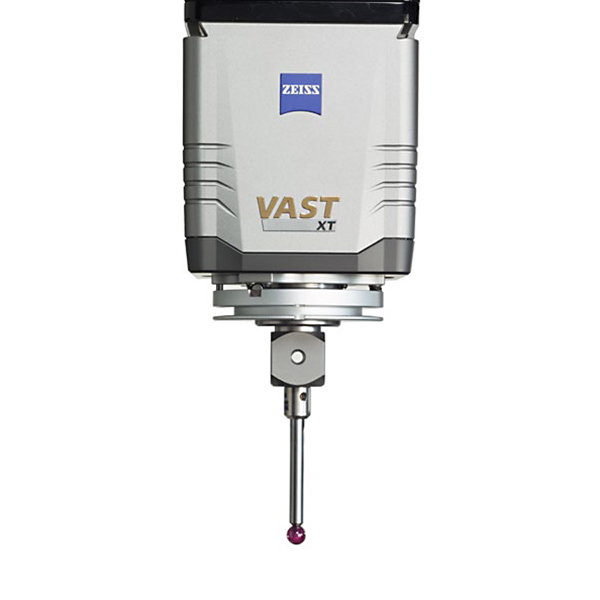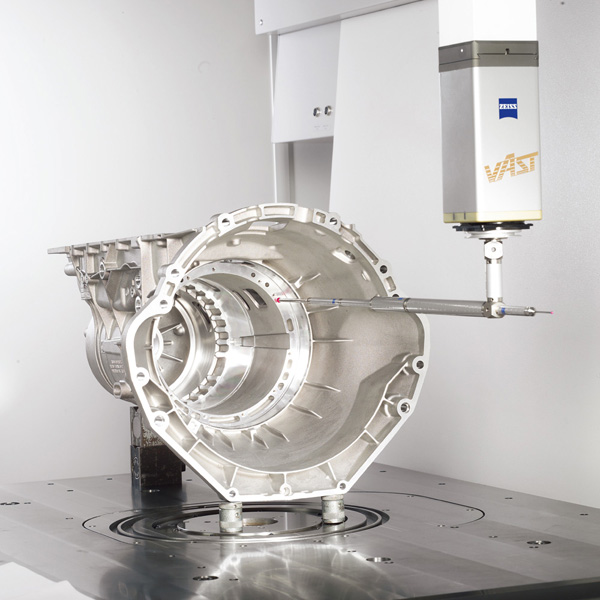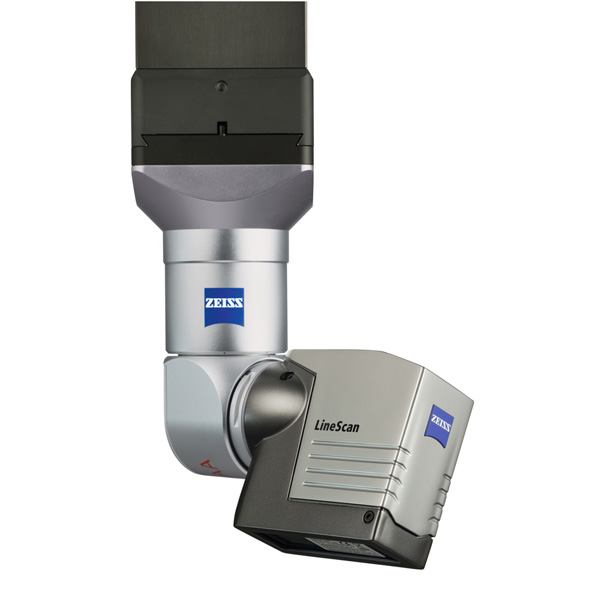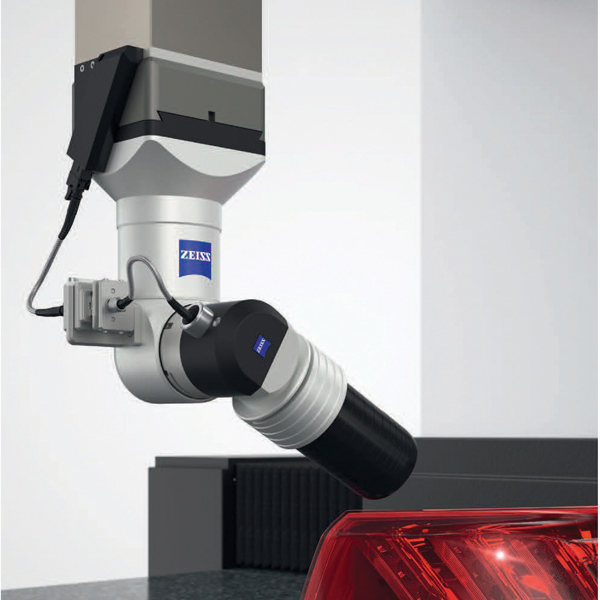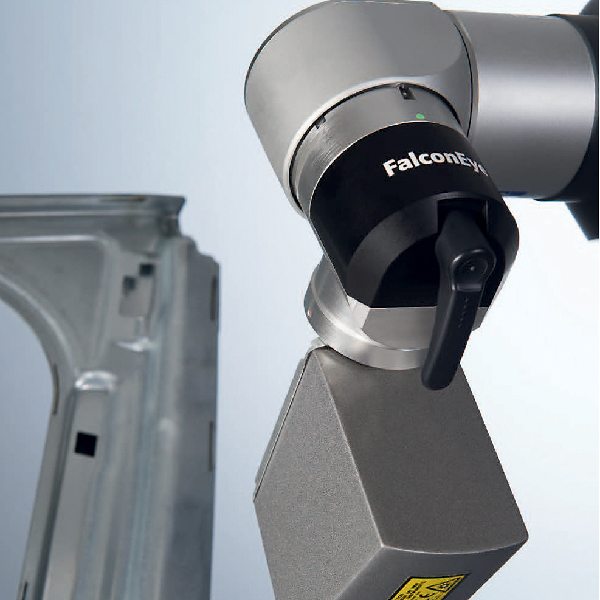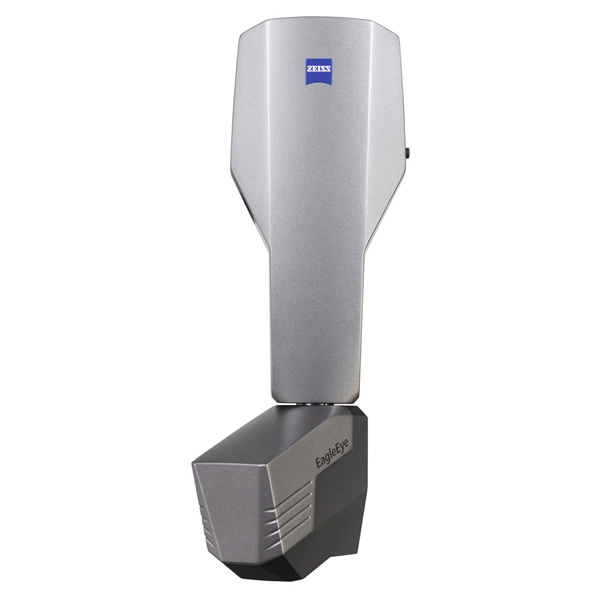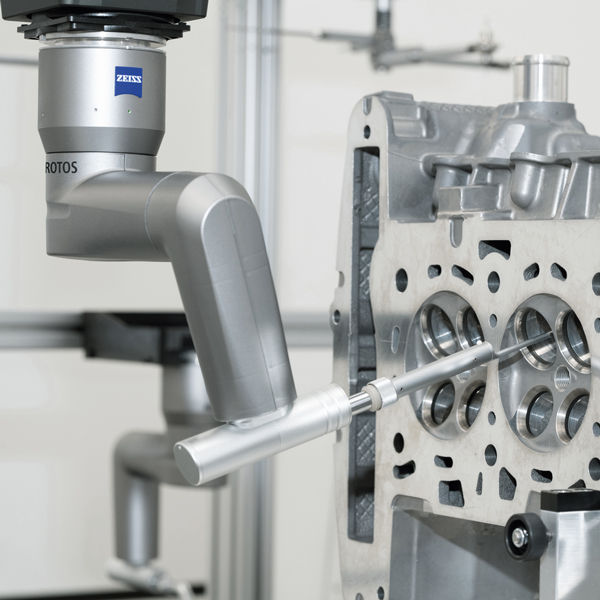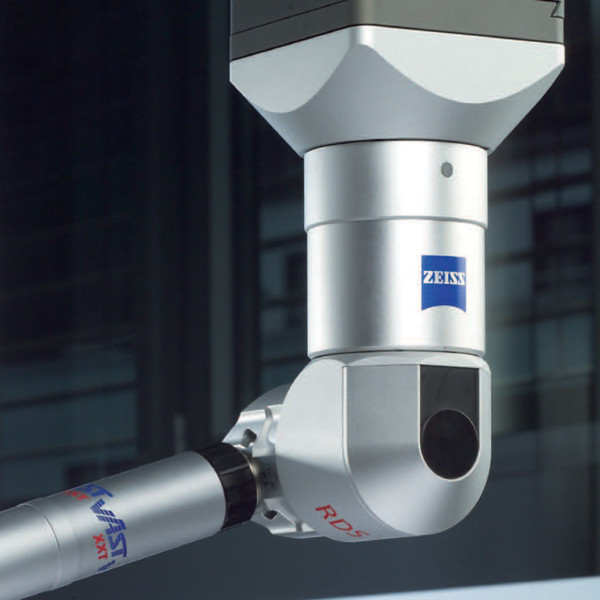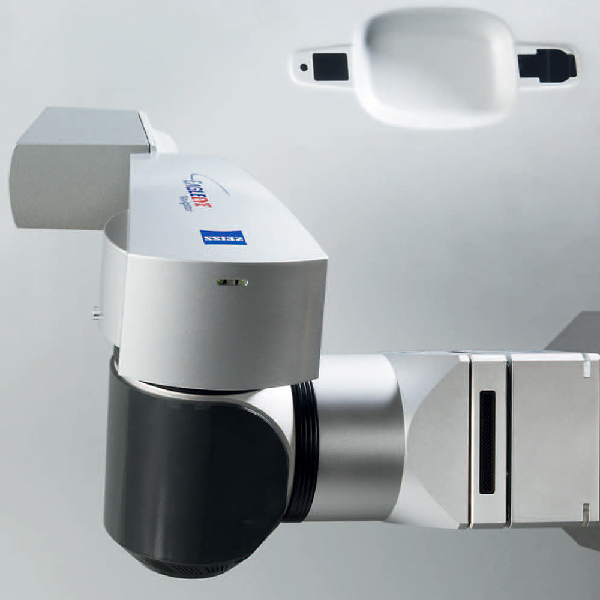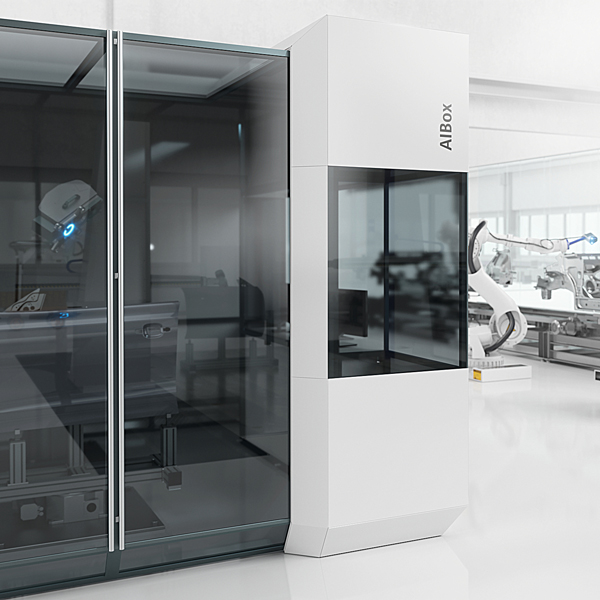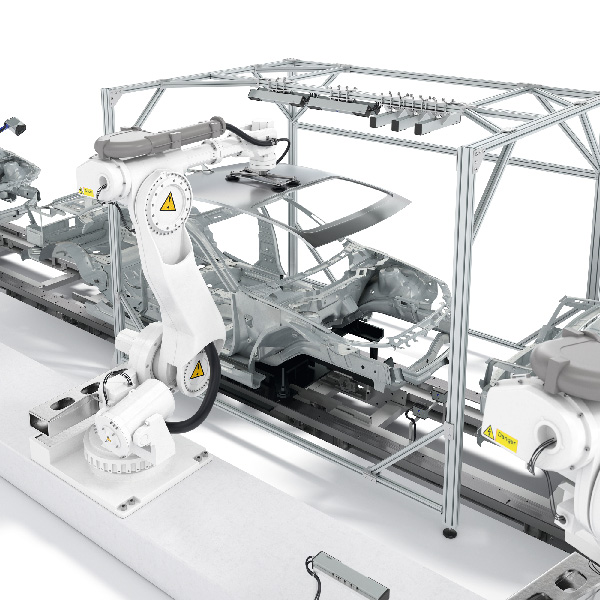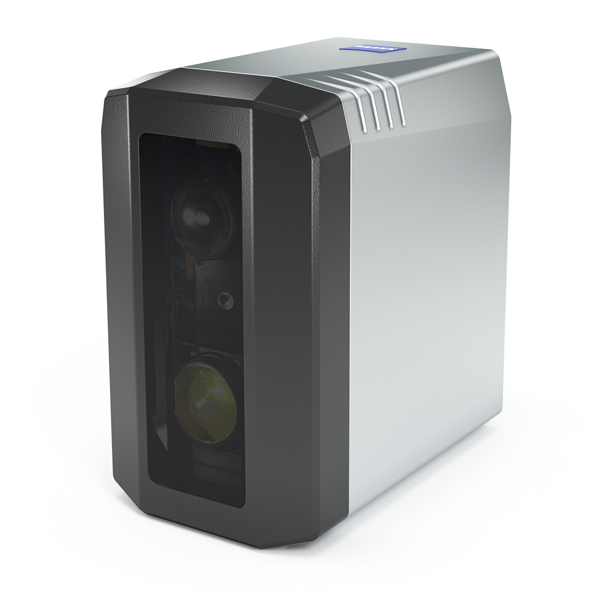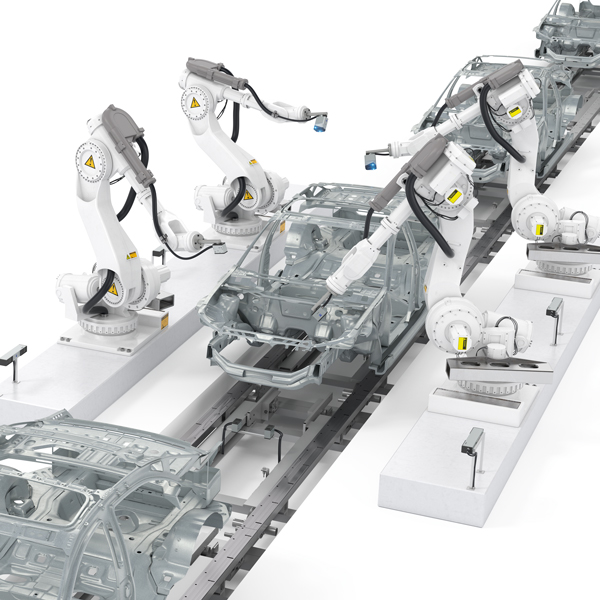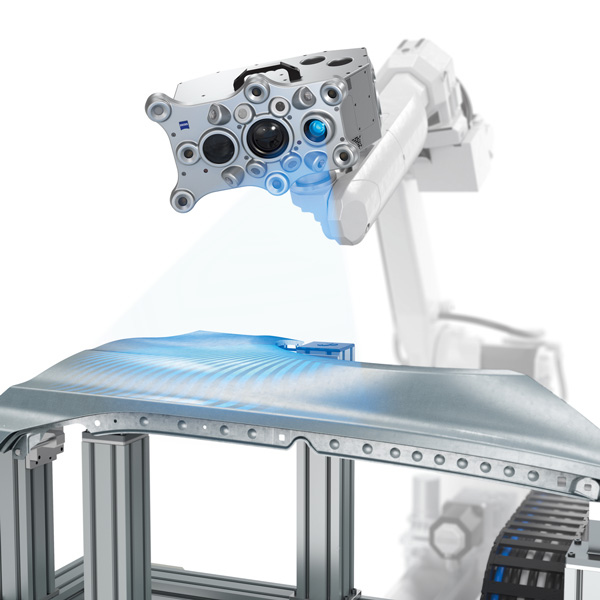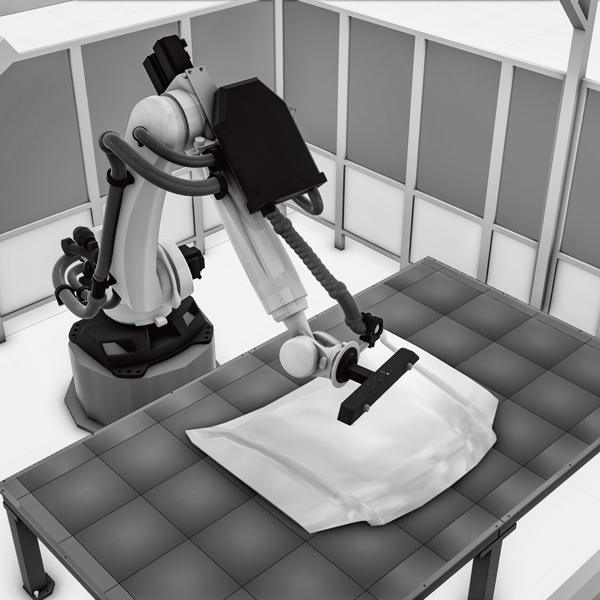ZEISS Sensors and Probes
Tactile and optical sensors and probes add unparalleled functionality to your ZEISS CMM or robotic automated solution. Enjoy full flexibility with articulating probe holders that allow the use of both optical and contact scanning probes on one CMM. Complex, fixed, two and three dimensional parts can all be measured with less effort, more precision, and unrivaled speed.
CMM Tactile Scanning Probes
Scanning Done Differently
VAST XXT allows high-accuracy scanning on the RDS articulating probe holder.
There are a large number of measuring applications that can benefit from the flexibility of an articulating probe holder combined with scanning capability. VAST XXT is ideal for such tasks.
Compared to touch-trigger sensors, VAST XXT increases the operational safety and accuracy of the measurements. It also adds scanning functionality, providing information on the form of the features.
The compact design of lightweight scanning sensors on the articulating probe holder requires different sensor modules. With only three modules, VAST XXT covers the typical stylus length ranges for this sensor design. This sensor accommodates lateral styli up to 65 millimeters, and is also suitable for fixed installation.
More Information
> Sensor Overview & Specs
All Systems Go for Active Scanning
ZEISS’s line of active VAST sensors plays a major role in all metrology applications that demand maximum precision with large stylus configurations. VAST XT gold Provides the foundation for entry into the world of active scanning technology.
With VAST XT gold, measuring force can be configured depending on the measuring job. This versatile sensor is used in a wide variety of applications, from a range of metrology uses to a line of correction procedures. In addition to active scanning, this sensor also allows single-point measurements, including the flexible use of complex stylus configurations and self-centering.
Thanks to its high-speed scanning capabilities, VAST XT gold can complete practically any job: form and position measurements, curve and freeform measurements, and reverse engineering. Applications cover plastic machined parts and Styrofoam, brake components, crankshafts, engine blocks, and turbine blades.
More Information
> Sensor Overview & Specs
Scoring Points with Speed
Thanks to the integrated rotary axis, the new VAST XTR gold probe positions the stylus in the direction of the feature being measured and maneuvers effortlessly through gaps, going wherever it is needed.
VAST XTR gold is based on the VAST XT gold design. The navigator and performance functions are fully supported by VAST XTR. VAST navigator is an expert system that recommends the optimal measuring speed for the desired accuracy. The VAST performance function enables the stylus to scan interrupted contours without sacrificing speed or precision.
The integrated swivel joint differentiates the VAST XTR gold from other scanning probes. This enables the stylus mount to turn as far as possible in 15 degree increments, allowing for precise positioning at the right angle to the part.
VAST XTR with the integrated swivel joint is as reliable and accurate as traditional “fixed” styli. Users can rely on the precision they are accustomed to. The probe flexes its muscles on a wide range of workpieces, including parts with many features and angular positions such as those on gear housings for helicopters and locomotives. VAST XTR gold is also suitable for rotationally symmetric workpieces such as ventilation gears or turbines. Thanks to the swivel joint, the probe reaches interior gears that until now could only be measured using complex stylus configurations.
The new sensor also has a particularly positive effect on large and heavy parts, such as those in shipbuilding, wind power, or the heavy equipment industry. With workpieces weighing more than five tons, it is difficult to find a rotary table suitable for the required accuracy and workpiece weight. VAST XTR gold answers this challenge with ease.
More Information
> Sensor Overview & Specs
Peak Scanning Performance Guaranteed
VAST gold is the ideal sensor for contact scanning and single-point measurements with long styli up to 800 mm and stylus weights up to 600 g. This active scanning sensor’s optimized joints offer higher dynamics through optimized moving masses and higher rigidity. Asymmetrical stylus configurations can also be used with VAST gold.
VAST gold is also known for its high scanning speeds with navigator technology. Thanks to its integrated collision protection, VAST gold is extremely robust. Dynamic damping enables continuous operation. The probing force can be adjusted to the stylus geometry and the workpiece material, and is always constant – it can be programmed between 50 and 1,000 millinewtons.
In combination with navigator technology in particular (object-oriented CALYPSO software from ZEISS featuring automatically generated measurement strategies) VAST gold increases measuring performance – and thus productivity – considerably. The FlyScan and QuickChange technologies in the Performance Package ensure maximum productivity. The short travel path on FlyScan results in time savings of up to 40 percent. The QuickChange function accelerates the automatic change out of measuring styli by up to 60 percent.
More Information
> Sensor Overview & Specs
Precision in All Probing Directions
There are many instances when users require the flexibility of an articulating probe holder. Thanks to a unique combination of technical features, the XDT multi-point sensor enables a wide range of applications and delivers high precision in all probing directions.
In place of touch-trigger sensors, the XDT enables increased operating safety and accuracy. Unlike touch-trigger single-point measuring, singlepoint scanning with sliding acquisition of measuring points provides a result featuring maximum accuracy and reliability. With single-point scanning, the measuring point is measured with at least 100 measuring points. Outliers are no longer important, and considerably improved accuracy is guaranteed.
More Information
> Sensor Overview & Specs
Precision in All Probing Directions
Thanks to a unique combination of technical features, the RST-P touch-trigger sensor enables a wide range of applications and delivers high precision in all probing directions.
This sensor is known for its fast and dynamic capture of measurement data through single-point probing, free from stylus bending and mechanical hysteresis.
RST-P works according to a dual principle: It delivers the actual probing pulse from the Piezo-electric elements located in front of the kink point while the three-point bearing serves as a mechanical kink point that verifies probing and protects the RST-P from damage caused by collisions or contact with the workpiece.
The deflection forces caused by the bearings and direction do not influence the measuring result; RST-P delivers the same accuracy in all probing directions. Special calibration is not required for slanted measuring or probing jobs.
In the automotive, engineering, tool-making, and mold-making industries, this sensor is the best solution for linear measurements on prismatic parts or fast point sequences on any surface.
More Information
> Sensor Overview & Specs
> QA Applications: Car Body Solutions
CMM Optical Scanning Probes
Point Clouds at the Speed of Light
ZEISS LineScan is the tool of choice when capturing the entire surface of forms using point clouds is important – whether for a comparison with available nominal CAD data sets or for the creation of a new CAD model.
LineScan is extremely fast: up to 250,000 points per second can be captured for high-speed digitizing. These short measuring times lead to a considerable increase in productivity. CALYPSO measuring software and the automatic sensor change out on machines featuring MASS technology also contribute to the high productivity of this sensor. Accuracy also increases thanks to the definable point grids and consolidation possibilities for intelligent point reduction.
The LineScan optical sensor is particularly useful for scanning car bodies, mold/tool making, construction and design, as well as for contact-sensitive or finely structured surfaces.
More Information
> View PDF: Sensor Overview & Specs
> Watch Video: LineScan Point Clouds
Spotlight on Two Dimensions
ZEISS ViScan allows measurements in all spatial directions without rechucking the part. Today’s test pieces today are so complex that contact or optical sensors alone are no longer sufficient. With the ViScan 2D optical probe, it is now possible to perform touch and optical measurements on one machine.
The hallmark of ViScan is its flexibility in all aspects: combined with RDS, it permits measurements in all spatial directions without rechucking the part. Different lenses are also available. The working distance is practically independent of the lens used, thus allowing the measurement of deep features. In addition to the measurement in the image, the auto-focus system also permits measurements perpendicular to the camera plane.
ViScan is particularly well-suited for the measurement of parts with very small or two-dimensional geometries and/or soft materials such as sheet metal, rubber, or plastic parts. Difficult measurements can also be performed on low-contrast test pieces such as punched components or printed circuit boards using the optional, mobile transmitted light stages with LED illumination.
More Information
> Sensor Overview & Specs
More Light on the Subject
Chromatic white light sensors enable the non-contact capture of workpiece topography. These are generally used when sensitive, reflective, or low-contrast surfaces make it difficult to use other optical sensors.
ZEISS DotScan is an outstanding option for capturing freeform surfaces – even for minute structures. Chromatic white light sensors like the ZEISS DotScan are the method of choice, especially when styli or camera sensors reach their limits on sensitive, soft, reflective, or low-contrast surfaces.
By using ZEISS DotScan, strongly reflective surfaces, such as metal components in knee implants, can be scanned without any need to inject them with a contrast medium. This also makes it possible to distinguish transparent lacquered surfaces from other underlying metallic layers.
ZEISS DotScan is available in three sizes for three different measuring ranges: 10, 3, and 1 mm. The sensor can be exchanged fully automatically for other contact or optical sensors within a single CNC run. With increments of 2.5 degrees, the articulated axis can align the ZEISS DotScan so it is perpendicular to the surface of the component being scanned. And since the maximum measuring angle of the ZEISS DotScan 1 mm is plus/minus 30 degrees, even more strongly curved components can be scanned.
Thanks to this sensor’s mode of operation, a wide variety of materials can be scanned from all sides without difficulty. In conjunction with a rotary table, even measuring jobs with 4-axis scanning can be performed.
More Information
> Sensor Overview & Specs
Fast, Accurate Analysis
Today’s automotive industry has less and less time to develop new vehicle models. This means proven solutions have to be combined with the latest technology. With ZEISS FalconEye, it is now possible to also use the same technology as that of the ZEISS EagleEye Navigator on stepping, articulating probe holders.
In car manufacturing, countless elements such as boreholes, sections, or threaded bolts have to be measured – including the finished vehicles themselves. For new vehicles, parts must be analyzed quickly and accurately. The requirements are very challenging and inspections are extremely time-consuming – particularly for serial inspection.
The ZEISS FalconEye optical sensor system (modeled on the technology of the ZEISS EagleEye navigator) overcomes these challenges, as it can be additionally used on stepping, articulating probe holders.
To obtain the required measuring results quickly and easily, the sensor must be optimally integrated into the overall system. The RDS-CAA stepping, articulating probe holder is ideal because only a few single positions have to be calibrated, but all angular settings are available for the application. This enables a considerable reduction in measuring times.
Through the utilization of an additional manual rotary axis, the ZEISS FalconEye system can be positioned in three angular settings with very accurate repeatability, permitting the laser line to be aligned relative to the part. Because of this, the sensor provides users with an outstanding system to quickly and accurately complete their jobs. The new ZEISS FalconEye system has also been optimally integrated into the CALIGO software package.
More Information
> Sensor Overview & Specs
> QA Applications: Car Body Solutions
Keen Eye in Car Body Measurement
Quality assurance in car body construction is among the most complex jobs in metrology. The EagleEye Navigator is based on a completely new optical measuring technology that precisely meets these demands. EagleEye Navigator turns your measuring machine into production equipment.
Automobile manufacturing requires measurements of countless bores in addition to edges, sections, or transitions. Checking boreholes is extremely time consuming work, particularly for serial inspection. EagleEye Navigator leads to time savings of almost 50% for the entire car body. Typical labor-intensive steps in traditional measuring methods are completely eliminated: no assembly and disassembly of threaded adapters, no material and storage or handling costs.
Furthermore, the use of EagleEye navigator immediately reduces throughput times while simultaneously increasing the quality of pressed parts. This results in top-quality evaluations of results with information on the diameter, position, and form of the part feature down to the micrometer.
More Information
> Sensor Overview & Specs
> QA Applications: Car Body Solutions
ZEISS ROTOS
A Whole New Dimension for Roughness Measurements
ZEISS ROTOS offers optimum precision and maximum flexibility when performing roughness measurements thanks to its modular design and rotation in three axes. Easy-to-change stylus arms further expand the range of possible applications.
Increased Measuring Speed, Greater Flexibility
The complete integration of the roughness measurement on your coordinate measuring machine (CMM) ensures that you capture all the characteristics of your component in one measurement run – in full compliance with standards.
All Analysis Results in One Report
All common surface parameters can be evaluated in ZEISS PiWeb in conjunction with size, form, and location and are shown in precisely the way you want.
Increased Efficiency Means Reduction in Costs
By integrating the roughness measurement into the measurement runs on your CMM, you avoid time-consuming reclamping on special machines for surface measurements.
Your Benefits at a Glance
- No reclamping on different machines
- Minimum set-up times
- Measurement controlled by CNC program
- Programmable via offline simulation
- Standardized measurement report with ZEISS PiWeb
- Accessibility: three axes each featuring +/- 180°
- Overhead measurements
- Modular design with three stylus arms: RS1, RS2, RS3
ZEISS CMM Probe Holders
Probe holders from ZEISS offer the possibility to use optical and tactile scanning probes on one CMM. With the articulating probe holder, even complex parts can be measured with less effort.
The Basis for Maximum Flexibility
The best articulating probe holder in its class enables you to reach virtually all angles via numerous single positions.
The RDS articulating probe holder is particularly well-suited for measuring complex parts, where features require many styli with different spatial directions. It reaches up to 20,736 positions in 2.5-degree increments, providing access to every part feature. This is made possible by the horizontally and perpendicularly arranged rotary axes with rotational ranges of plus/minus 180 degrees.
The RDS-CAA for touch-trigger and measuring sensors leads to shorter calibration times – only a few spatial angular positions require calibration. During programming, the RDS can be easily positioned using the joystick on the control panel to enable shorter programming times. Designs are available for machines in standard, compact, and multisensor configurations.
More Information
> Sensor Overview & Specs
> QA Applications: Car Body Solutions
Maximum Dynamic and Precision
More powerful, faster, and more accurate – the CSC sensor establishes a new standard for continuous articulating units and is ideal for the volume measurement demands of complex car body parts.
Optical and contact sensors must be optimally positioned for the volume measurement of complex car body parts if they are also to measure difficult-to-reach points in the part interior – long extensions are often required. It is exactly here that the CSC opens up opportunities that have been unavailable until now due to significant torque reserves combined with maximum resolution and precision.
In order to optimally control processes in car body construction, the results of the measurement must be available as quickly as possible. The high dynamic of the CSC considerably reduces measuring time without sacrificing safety. An in-house safety concept enables the integration of a collision-protected bearing for the sensor plate in addition to the known collision protection for the articulating unit. This reliably prevents sensor damage in the event of a collision with the part.
Another benefit of the CSC is the completely re-engineered stylus changer. As with the RDS stepping, articulating unit, the changer is now completely passive. Therefore, compressed air is no longer required on the measuring machine, which also means cost savings for the user. The changer can be positioned as needed because it also works without electrical connections.
More Information
> Sensor Overview & Specs
> QA Applications: Car Body Solutions
Optical Sensors for Robotic Automated Solutions
Automated 3D Digitization and Inspection
The Measuring Assist System for Car Body Construction
The ZEISS AIBox brings traceable coordinate measuring technology close to production. It shortens the trip to the measuring station and reduces the time needed for measurement through the use of a robot and optical sensors.
Fully Enclosed, Fully Protected and Integrated
The ZEISS AIBox features a fully enclosed measuring cell. This serves not only to optimize occupational safety, but also to protect the high-resolution measuring technology against external influences. Extraneous light is eliminated, contamination reduced, and temperature stability increased by the production cell. Optimal positioning of the integrated computer workstation permits space-saving and ergonomically correct work –directly at the scanning box.
Robot-Guided Optical Sensors for High Measuring Speeds and 3D Analyses
The robot-guided optical 3D measuring system is primarily designed for fast at-line analyses. At the same time, it is powered by the measuring expertise of ZEISS. Innovative technical features such as the blue LED technology, the integrated edge illumination module, and the integrated photogrammetry system lay the foundation for the excellent overall accuracy of the 3D measuring system.
ZEISS CALIGO Measuring Software – One Solution Instead of Two
The ZEISS AIBox automated measuring cell runs with ZEISS CALIGO measuring software which has proven to be very successful in car body construction. Measuring room personnel can be flexibly deployed at the scanning box. Measurement programs can be used regardless of the machine.
More Information
> View PDF: AIBox Flex
> QA Applications: Car Body Solutions
> Watch Video: ZEISS AIBox Flex
Digital-Optical 3D Sensor
Introducing the new benchmark in robot-based 3D inline metrology – featuring a unique combination of three measuring principles in one compact sensor. The ZEISS AIMax digital-optical 3D sensor is the new benchmark in robot-based 3D inline metrology for sheet metal processing and car body construction.
The unique combination of three measuring principles in one compact sensor enables the measurement of complex geometric characteristics such as holes, bolts, and gap and flush with maximum robustness, as well as attributive characteristic recognition.
Your Benefits at a Glance
- Unique combination of three measuring principles in one sensor for gray scale image processing, multi-line triangulation, and shadow analysis
- Digital (GigE) camera technology with signal lines up to 100 m
- High resolution for increased measuring accuracy
- Fastest measuring speed for characteristic analysis
- Flexible illumination control for optimal illumination such as individually switchable segment illumination and combinations to generate ideal contrast of difficult-to-measure features
- Optimized sensor design for the measurement of features with an inclined sensor (not Normal-to-Metal)
- Attributive feature recognition for data matrix codes, existence checks, type identification, and visibly recognizable process errors
More Information
> QA Applications: Car Body Solutions
Capture 3D Point Clouds In-Line
The ZEISS AIMax cloud optical 3D sensor is the new benchmark in robot-based 3D in-line metrology in the fields of sheet metal processing and car body construction. The sensor generates 3D point clouds directly at the production line and measures complex features with high precision in a fraction of a second.
Optical 3D Sensor for Fast 100% Measurements in Cycle Time
Measurements of parts that were previously difficult to analyze, such as rivets, nuts behind sheet metal, and characteristic design lines can now be conducted easily and quickly with ZEISS AIMax cloud. The measurement setup is fast and intuitive, and the result is visualized immediately after the measurement.
Capture and Evaluate Complex Features With Only One Measurement
Possible applications include the inspection of assembly and welding processes, gap-and-flush measurements in body shell construction, and final assembly in the automotive industry. By capturing dense point clouds, the ZEISS AIMax cloud offers the possibility of measuring multiple features with a single capture, particularly those that have previously been difficult to analyze – such as bending edges, rivets, surfaces points, and T pins. The sensor can therefore be used very flexibly.
Measuring Results Quickly and Reliably
The optimized projection technology and the high 3D resolution enable fast, exact measurements, even of tiny features on both sheet metal and paint. The feature extraction in the point cloud is more robust than in conventional image processing, is faster to set up, and is more user-friendly to operate.
More Information
> In-Line Innovations: Correlation-Free Measurements
> QA Applications: Car Body Solutions
Process Inspection with Stationary and Mobile 3D Sensors
The AIMax Inline and AIMax BestFit fixed sensors from ZEISS are compact, optical 3D geometry sensors designed for industrial use with in-line measuring technology. A comprehensive technology package allows you to complete various tasks such as quality assurance, location recognition, and production-control jobs, including robot guidance.
The optical sensor is suitable for particularly difficult-to-reach areas. It can also be used in stationary fixed sensor cells and directly on the robot. The compact size enables a large number of sensors to be integrated in a small space.
Applications for stationary and mobile 3D sensor
- Inspection of assembly and welding processes
- Extensive measuring functions
- Precision car body construction and metalworking
- Location recognition and positioning (parts, car bodies)
- Component attachment (doors, windows, covers)
- Robot guidance
- Form & piece
More Information
> QA Applications: Car Body Solutions
The Next Generation of Sensor
An impressive combination of high-end technologies for quick and precise automatic 3D digitization.
At the heart of the ZEISS AIBox and ZEISS AIBox flex digitization systems is the next generation of 3D sensor ZEISS COMET Pro AE for faster and more precise modular at-line measurements.
Additionally, a uniform measuring software provides you with greater flexibility – use measurement plans and personnel in the measuring lab or on the shop floor as needed.
Benefit from the fusion of high-end optical technologies for more precise measurement results. Reduce costs thanks to exceptional ease-of-use and automated measurement runs with robot-guided 3D measuring technology. Experience especially high throughput thanks to the extremely short measuring times of the ZEISS COMET Pro AE.
More Information
> More About ZEISS COMET Pro AE
Surface Inspection System: Available in Different Versions and System Concepts
Objective and Fast Measurement with Modular Sensors
A wide range of defect types can be detected with ABIS II sensors.
Featuring a reliable, early recognition and classification of dents, bumps, sink marks, waviness, constrictions, cracks, etc., these systems represent the perfect quality control instruments for the production of sheet metal parts and bodies-in-white. Users especially benefit from high precision and extremely short cycle times.
The modular sensor technology of ABIS II offers an exceptionally high flexibility. With the optional integration of the contrast sensor, the detection of contrast-sensitive defects such as adhesive residues, scratches, and dirt is also possible.
Continuous Analysis Throughout the Complete Process Chain
Many users in the automotive industry rely on an integrated surface quality analysis across the entire process chain. After each process step – Single Part, Assembly, and Cathodic Dip Painting – individual parts are examined again to identify any surface defects that might affect top coat quality. The development of a defect is documented after each process step. Practical experience in production shows that the relevance of a surface defect can increase or decrease after a process step.
Based on a process-wide quality analysis, the required rework is done precisely at the required location on the part and at the required process steps. This increases efficiency in the finishing area and results in significant cost savings
Besides the development of a surface defect across the process chain, the time-related changes within a production period also give users important information on quality changes. For example, when the audit value deteriorates, corrective action (e.g. regarding press parameters or tool surfaces) can be taken at an early stage before producing parts with defects that will later require rework.

